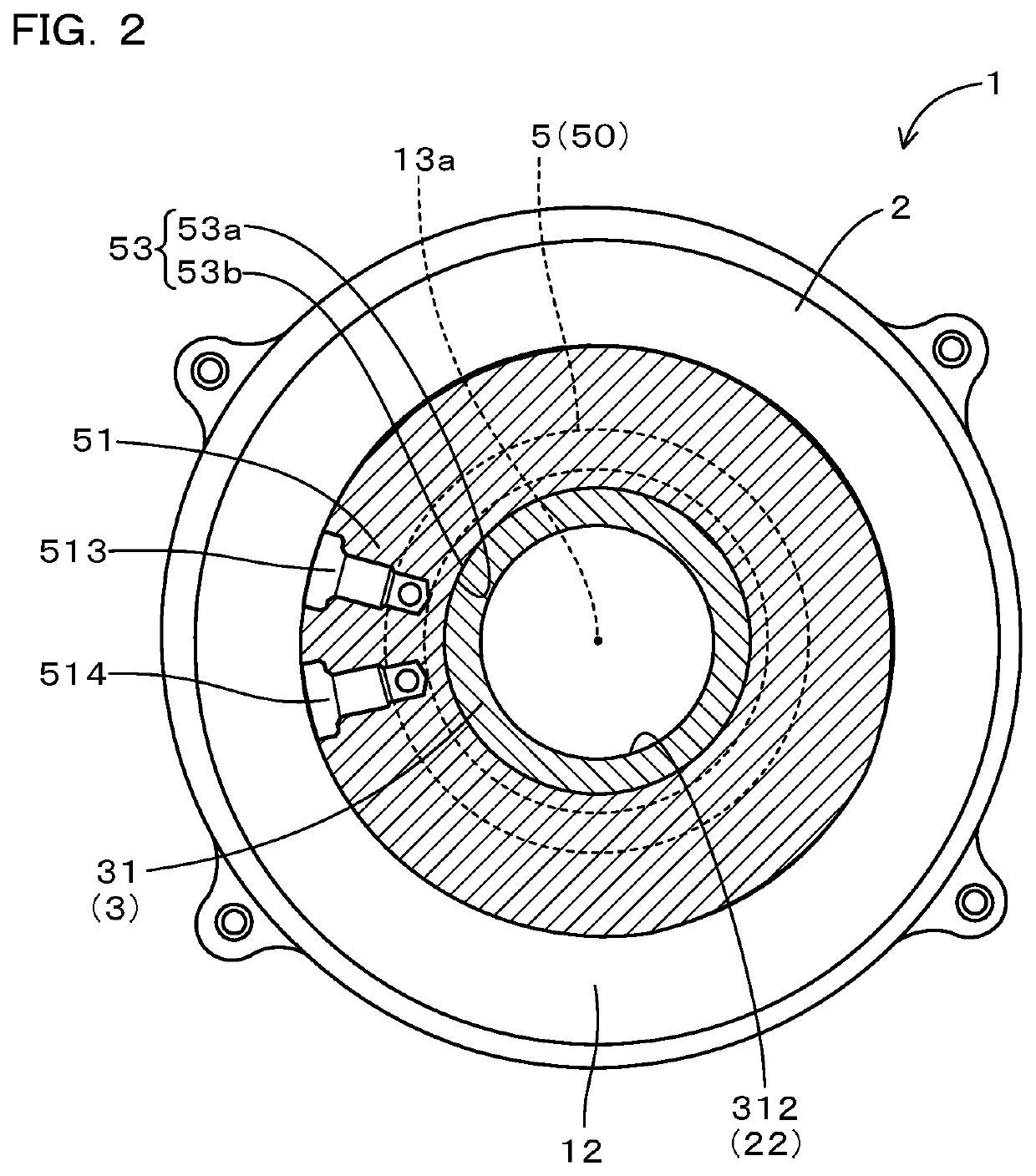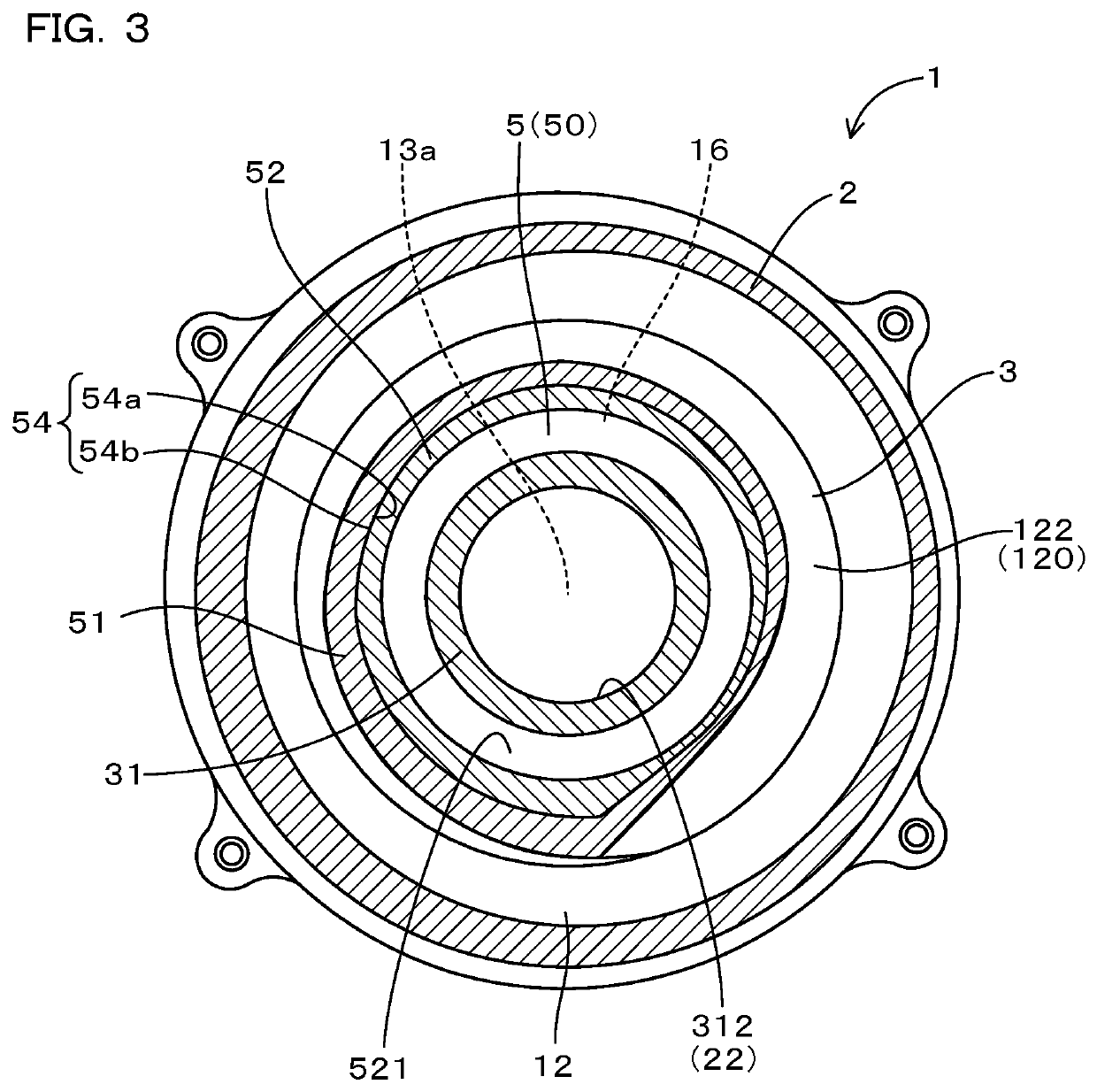Housing for turbocharger and method for manufacturing the same
a turbocharger and housing technology, applied in the direction of machines/engines, stators, liquid fuel engines, etc., can solve the problems of reducing the compression efficiency of supplied air, increasing manufacturing costs, and reducing the workability of assembling, so as to reduce the parts count, facilitate formation, and improve the effect of assembling workability
- Summary
- Abstract
- Description
- Claims
- Application Information
AI Technical Summary
Benefits of technology
Problems solved by technology
Method used
Image
Examples
embodiments
Embodiment 1
[0054]Hereinafter, an embodiment of the aforementioned housing for a turbocharger will be described with reference to FIGS. 1 to 9.
[0055]As shown in FIG. 1, a housing 1 for a turbocharger houses a compressor impeller 13, and is provided with an intake port formation part 110, a shroud part 20, a diffuser part 30, a scroll chamber formation part 120 and a refrigerant flow path 5.
[0056]The intake port formation part 110 forms an intake port 11 configured to suck in air toward the compressor impeller 13.
[0057]The shroud part 20 surrounds the compressor impeller 13 in the circumferential direction and has a shroud surface 22 facing the compressor impeller 13.
[0058]The diffuser part 30 is formed on the outer peripheral side of the compressor impeller 13 in the circumferential direction and forms a diffuser passage 15 that allows compressed air discharged from the compressor impeller 13 to pass therethrough.
[0059]The scroll chamber formation part 120 forms a scroll chamber 12 ...
embodiment 2
[0103]In the housing for a turbocharger 1 according to the present embodiment, as shown in FIGS. 15 and 16, the refrigerant flow path 5 includes a cut part 57. Note that components equivalent to those in Embodiment 1 are allotted with the same reference numerals to simplify the description.
[0104]The method for manufacturing the housing 1 for a turbocharger according to the present embodiment will be described below. As shown in FIG. 17, the molding step S1 is performed first similarly in Embodiment 1. Then, a cutting step S3 is performed as follows. The bottom of the second wall surface 521 formed from the second flow-path formation part 52, which is recessively formed toward the Y2 side, that is, part of the second wall surface 521 positioned most forward on the Y2 side is cut to form the second flow-path formation part 52 into a further recessed shape. After the cutting step S3, the assembling step S2 is performed similarly in Embodiment 1.
[0105]When the second flow-path formation...
PUM
 Login to View More
Login to View More Abstract
Description
Claims
Application Information
 Login to View More
Login to View More - R&D
- Intellectual Property
- Life Sciences
- Materials
- Tech Scout
- Unparalleled Data Quality
- Higher Quality Content
- 60% Fewer Hallucinations
Browse by: Latest US Patents, China's latest patents, Technical Efficacy Thesaurus, Application Domain, Technology Topic, Popular Technical Reports.
© 2025 PatSnap. All rights reserved.Legal|Privacy policy|Modern Slavery Act Transparency Statement|Sitemap|About US| Contact US: help@patsnap.com



